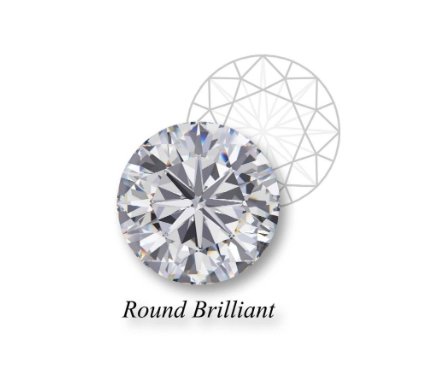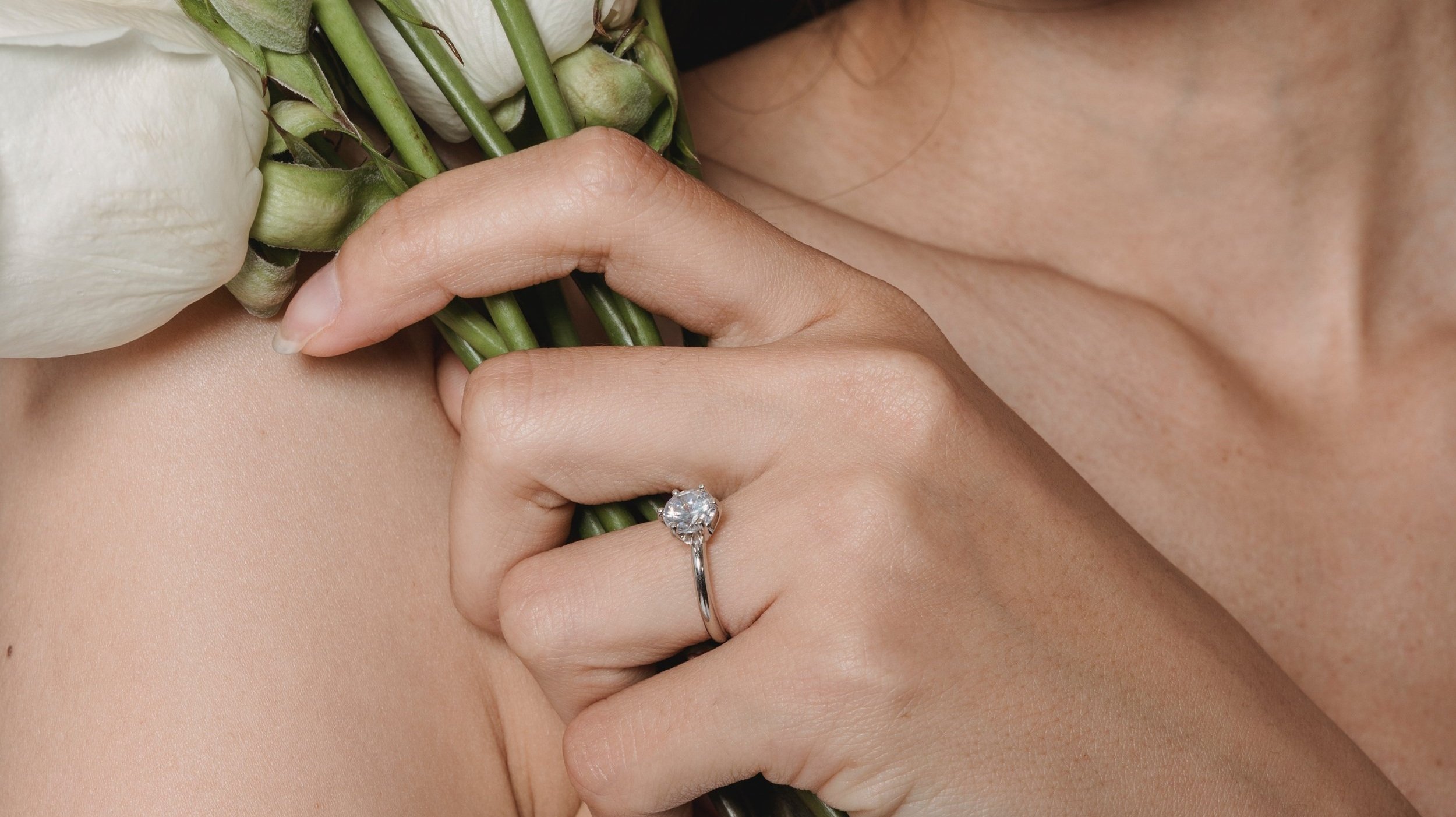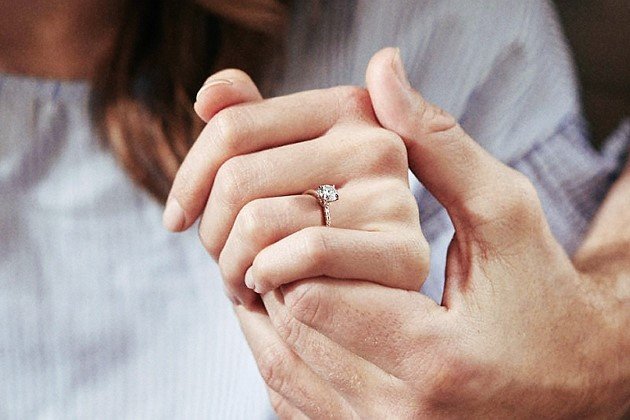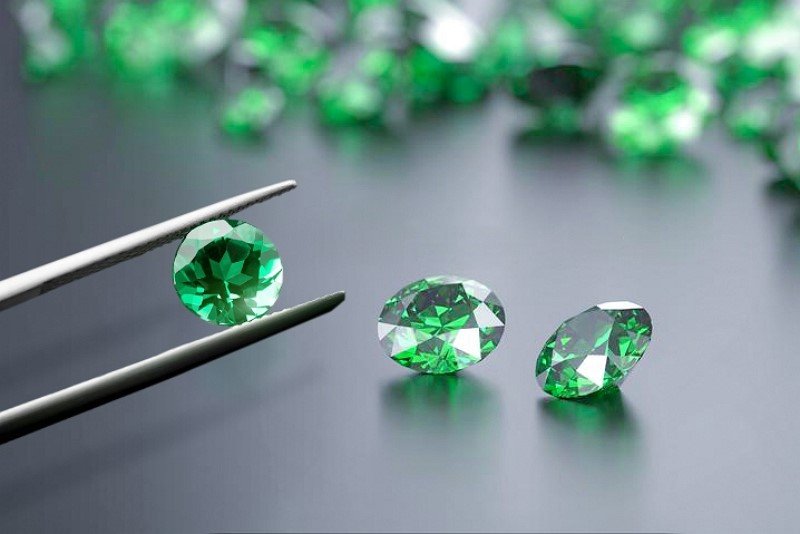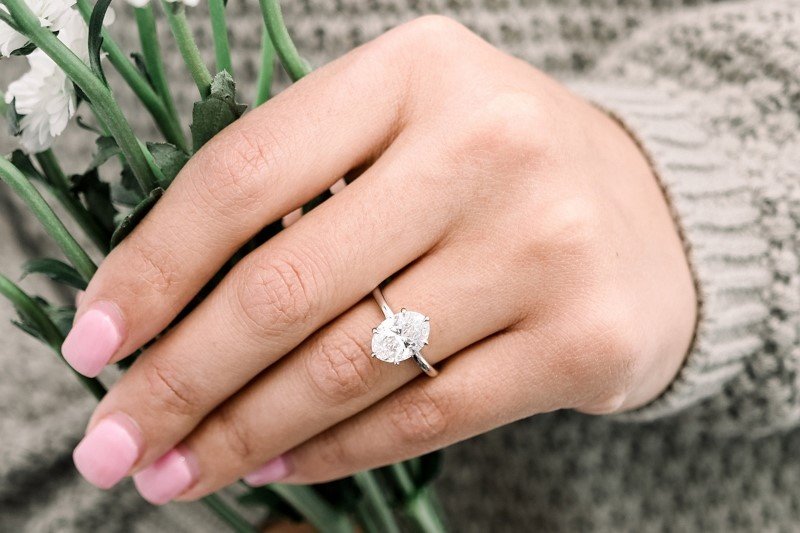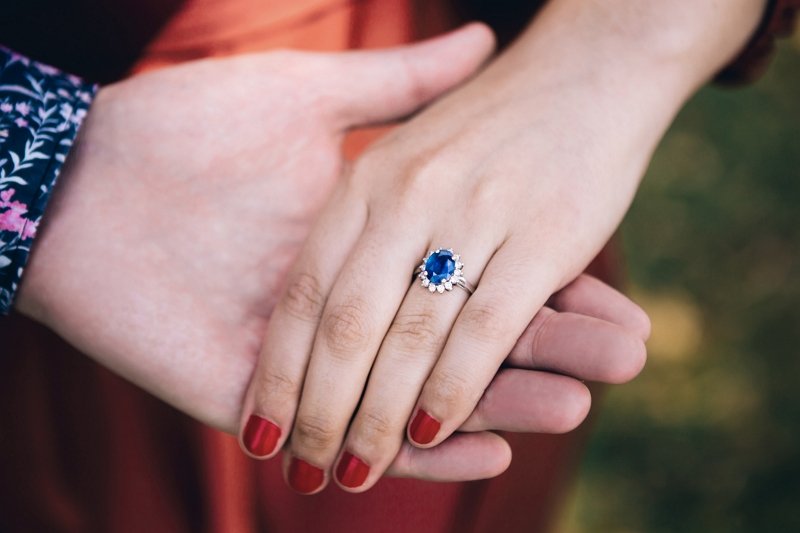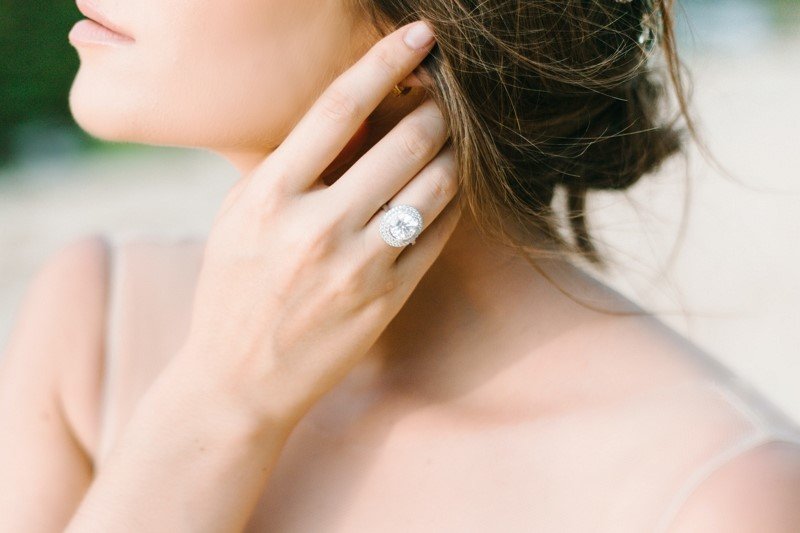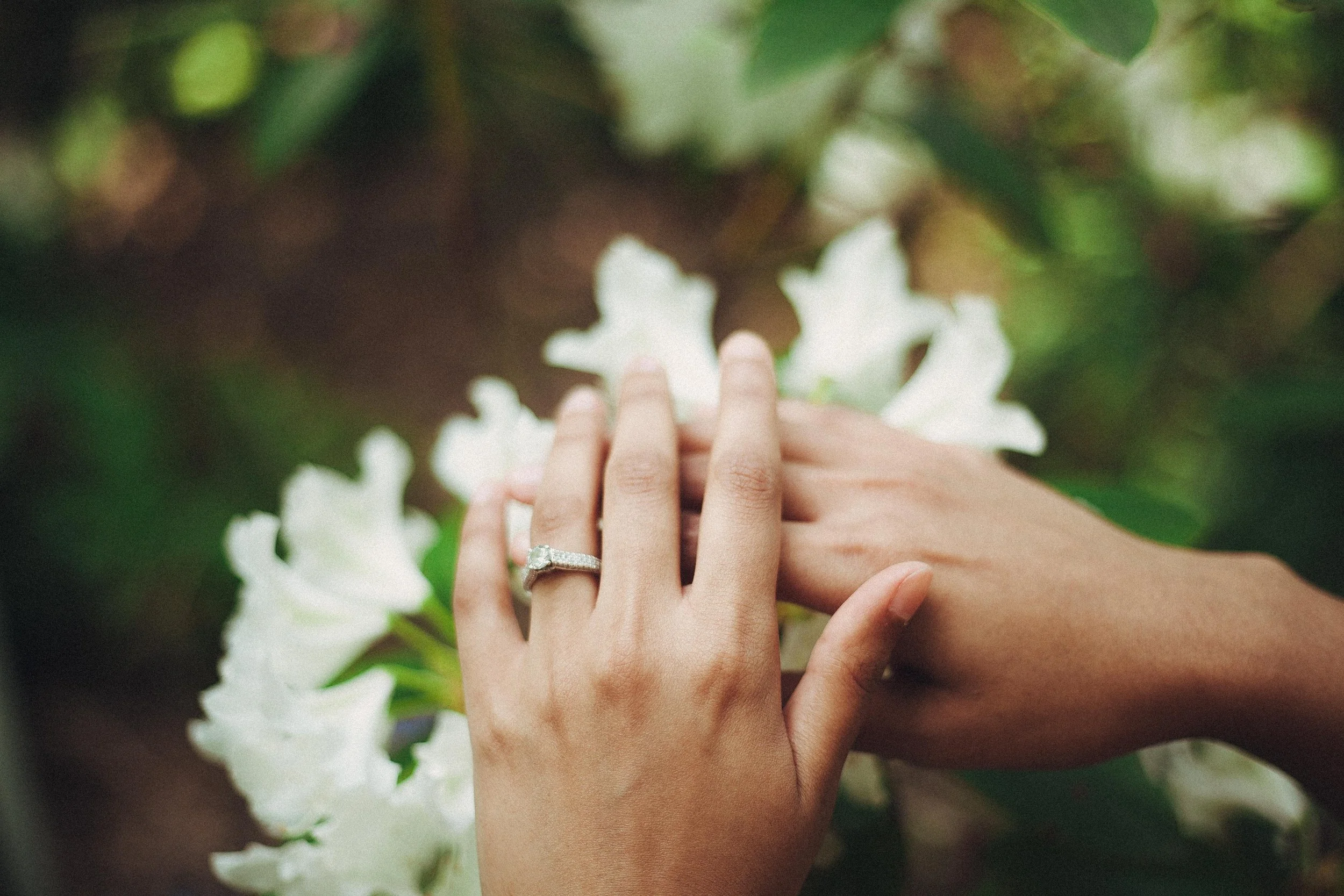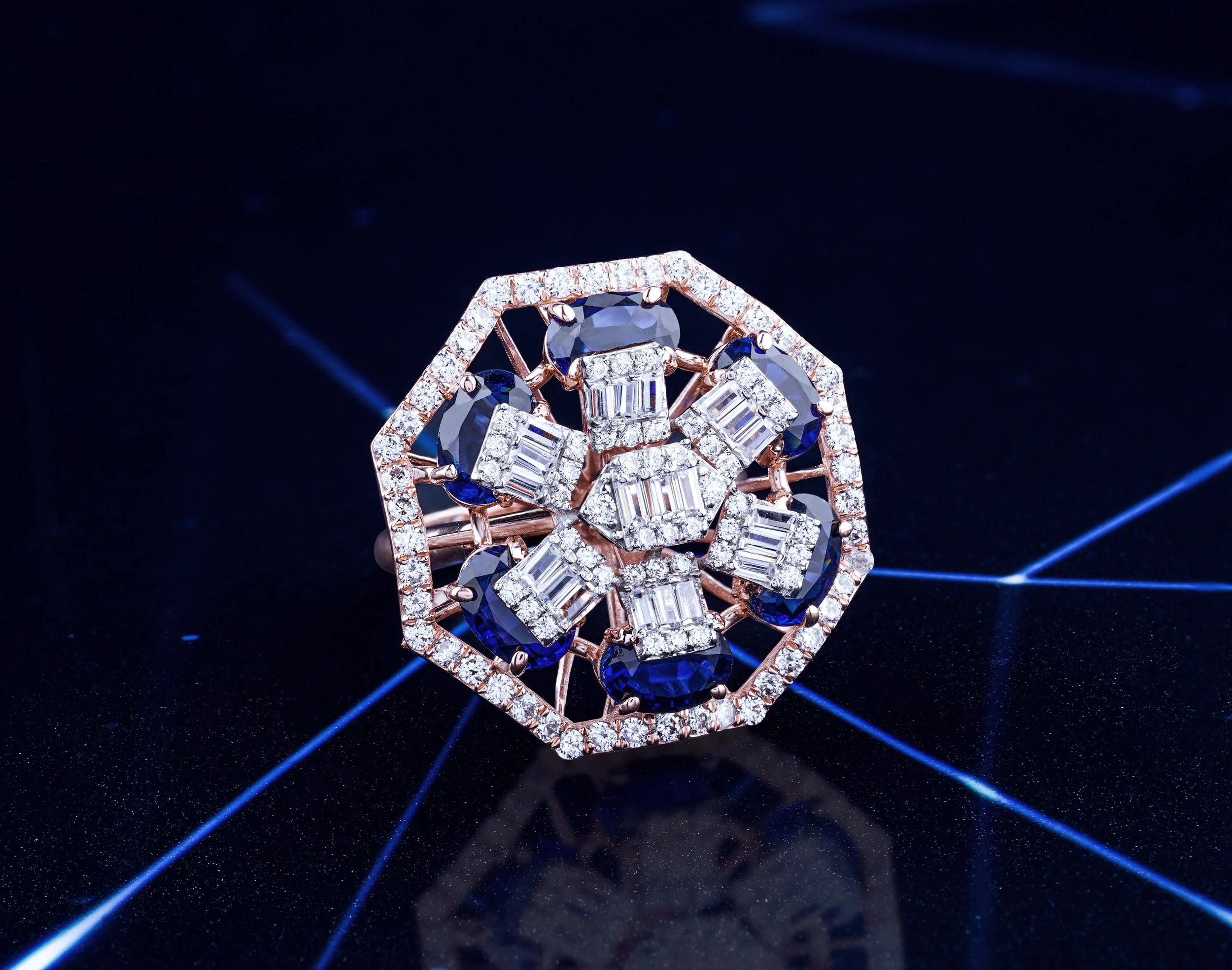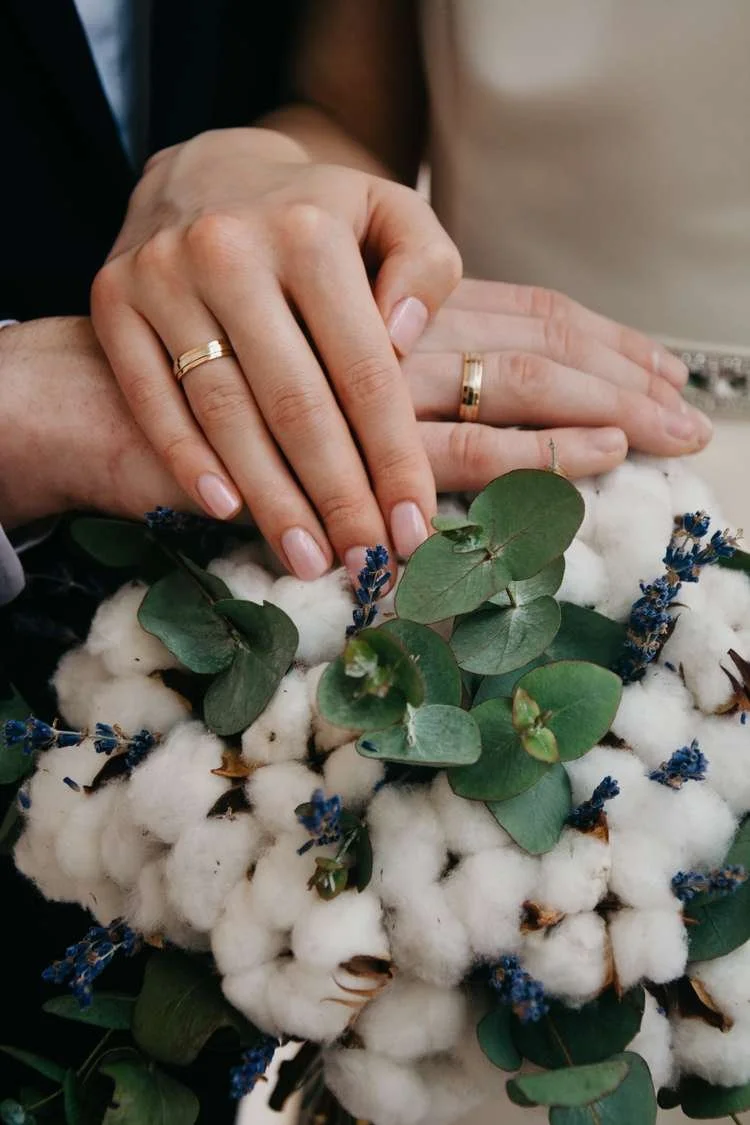How to Find the Perfect Lab-Created Round Diamond
For decades, the round cut diamond has maintained its top position on the trend charts, making it the most popular diamond shape. More than 70% of all diamonds sold are round cut, and this is because it offers more sparkle, reflects light beautifully, and pairs well with any ring setting.
There is a good amount of controversy surrounding lab-grown diamonds, as many people believe they do not qualify as real diamonds. However, it has been proven that lab-grown diamonds are real diamonds, even though they are created under different circumstances. In fact, some industry experts can barely differentiate between a natural and a lab-grown diamond because of how similar their physical, optical, and chemical properties are. Aside from being sustainable, lab-created diamonds are 30-50% cheaper than natural diamonds, are easily accessible, and have pure and enhanced qualities in terms of the 4Cs of diamonds due to being grown in a controlled environment.
With so much to consider when shopping for the ideal diamond, the rules, trends, and guides for choosing a lab-grown diamond are the same as those of natural diamonds. Continue reading to learn how to pick the perfect round lab-grown diamond for your proposal or wedding ring.
What is a round brilliant cut?
A popular diamond cut with a cone-like shape and 57 or 58 facets with the cutlet included. The terms 'round cut', 'round brilliant', and 'brilliant cut' all refer to the same diamond shape.
The history of round brilliant cut
The Round Brilliant Cut dates back to the 1700s, when few jewelers attempted to make round diamond shapes. At that time, this was almost impossible because no technology could help achieve this. Since they couldn’t get the perfect circular shape, the old mine cut (which had a cushion shape) was formed. As the industry progressed, the bruting machine was invented in the late 1800s, making it possible to cut circular diamond shapes. This led to the creation of the old European cut diamond. In 1919, Marcel Tolkowsky, a Belgian mathematician, invented the modern round brilliant cut diamond with the proportions of a 53% table, 59.3% depth, 34.50 crown angle, and visible cutlet. To date, his model, which has been perfected by experts over time, is adopted as an American standard and is still being used by jewelers over the world to create the ideal round cut.
A lab-created round diamond doesn't have to be 100% perfect to show its brilliance, fire, or reflect light beautifully. As such, it remains an ideal choice for engagement and wedding rings.
So, why should you choose a lab-created round diamond?
It's easy to get caught between choices when trying to pick the perfect shape for your diamond ring. Nevertheless, the lab-created round diamond has proven to be a classic and elegant piece. Here's why:
1. The 58 facets, which are carefully constructed, create an unmatched brilliance and sparkle, reflecting light remarkably.
2. The round brilliant cut is a classic timeless piece that never goes out of style no matter how trends change.
3. The round brilliant cut is easy to find, unlike other fancy shapes, because of its popularity.
4. The round brilliant cut complements any ring setting.
5. The absence of pointy edges or sharp angles (as found in marquise or princess cuts) makes the round cut far more durable.
What to look for when selecting the perfect lab created round diamond?
When it comes to selecting a diamond cut for your lab-grown diamond ring, the right information is all you need. Nowadays, with this information, you can easily place orders online without ever needing to step foot into a jewelry store. So, let's discuss what you should look out for when selecting the perfect lab-created round diamond.
The 4Cs of lab-grown diamonds
Choosing the ideal lab-grown diamond involves considering the shape, style, and setting of the ring, along with a wide array of other qualities. The 4Cs of a lab-created diamond play a role in its beauty and elegance; they include the cut, color, clarity, and carat weight.
-
Most people confuse a lab diamond’s cut for its shape, but it is in fact far more than that. The cut refers to the stone's facet, proportions, polish, and brilliance - which describes how well it can interact with light and reflect it to the eyes. Meanwhile, the shape refers to the stone’s geometric shape (oval, round, heart, etc.). Grading a lab-made diamond’s cut is very complex because the craftsman’s skill is carefully evaluated to see how precise the cut is. All lab-grown diamond cuts are graded from Excellent to Poor. The round brilliant is the only cut that the GIA grades, because the perfect circle shape has the ideal proportions. The safest range of grading for a high-quality round brilliant cut lab-grown diamond is from Excellent to Very Good.
-
Although the distinctions of a colorless diamond's color is almost invisible to the untrained eye, the color can either add to or diminish the value of a stone. GIA grading for all diamonds ranges from D-Z, with D being completely colorless and Z having a noticeable yellow or light brown hue. How well the color shows depends on the shape, cut, and carat size of the diamond. Overall, the round brilliant cut hides color better than other step-cut shapes because of its incredible reflective properties. Fancy-colored diamonds are now available to be created in labs where all factors are controlled, and lab-grown diamond producers like Sunny Eden™ can customize a diamond from the carbon in hair with a variety of fancy and vivid colors including green, blue, pink, and yellow.
-
A diamond’s clarity measures the visual appearance and the existence of internal flaws (inclusions) or external flaws (blemishes) on the diamond. It is quite rare to see a flawless diamond, and the fewer flaws it has, the more valuable and brilliant it is graded.
The GIA grading scale starts from FL (Flawless) to I (included), with other grading categories between the two. Flawless means that the inclusions and blemishes are not visible under a 10X magnification lens, while Included means that the inclusions are visible under a 10X magnification lens, thus affecting the diamonds’ transparency and brilliance. The triangular facets in a round brilliant cut hide inclusions well compared to other step-cut diamonds.
-
A diamond’s carat is usually confused for how large the stone is, but in real terms, it refers to the weight of the stone. One carat is 0.2 grams and the greater the carat, the more expensive the stone is. The ideal carat for a round brilliant cut depends on your personal preference; however, note that the larger the stone, the more visible the inclusions become if you opt for a diamond with lower grading.
Finding lab-grown diamonds, especially online, isn't such a big task. However, getting one with exceptional quality definitely can be. Sunny Eden™ lab-grown diamonds are special and customized diamonds made from your hair, which is truly unique and meaningful. They are more affordable than natural diamonds and have exceptional quality as well. You can book a consultation with Sunny Eden™'s gemologist and jewelry expert to create your own perfect lab diamond ring with the maximum amount of brilliance, fire, and scintillation. Besides the classic round brilliant cut, Sunny Eden™ offers 10 types of beautiful fancy cuts for you to choose from.
Best engagement ring settings for lab created round diamonds
While we already mentioned that the round brilliant cuts fit any engagement ring setting, there are a few that truly stand out, showing the exceptionality of the stone without hiding its fire and brilliance.
-
The round brilliant cut solitaire diamond ring is popular among many brides-to-be. The solitaire setting has a simple and minimalist design that makes the lab-created round diamond a point of attraction and allows enough light to pass through it, showing its brilliance. The solitaire setting has only one diamond center stone without accent gemstones on the ring shoulder, and the center diamond is usually held secured by four or six prongs. There are no rules as to which type of band you should use for a solitaire setting. You can select one with a sleek design like the Clover solitaire engagement ring from Sunny Eden™, select a simple plain shank, or even a complex shank like the infinity twist.
-
Like solitaire, the cathedral diamond setting is a popular setting for engagement rings because of its classic and timeless elegance. The name stems from the fact that the arches or prongs holding the diamond in place resemble the arches of traditional European churches. The cathedral setting has a flexible design that can be easily matched with other decorative settings such as pave, halo, split band, and channel settings.
-
If you live an active lifestyle, the bezel setting diamond ring may be ideal for your diamond in terms of protection. This type of setting keeps the entire edge of the stone wrapped in a metal housing so that only the stone’s surface is visible.
While the bezel setting may provide the utmost protection for your round brilliant diamond, it also limits the amount of light that can pass through the stone, thus reducing its sparkle.
-
If plain shanks aren't your thing, the Pavé setting might be your best bet. Pavé settings have all or about half of both sides of the band covered in small diamonds held in place by tiny prongs, giving a sparkling effect that accentuates the center stone. The downside of this setting is that unless it is only paved halfway, resizing such a ring can be somewhat challenging.
Getting the perfect setting for your round brilliant lab-grown diamond is not a difficult feat with jewelers like Sunny Eden™. They not only customize a special and unique diamond out of carbon in your and your partners' hair, but also offer a vast range of stunning engagement ring settings for you to choose from. What’s more, Sunny Eden™ provides custom-made services that allow you to choose every detail of your engagement ring. From the ring metal and shank design to the setting types, you can custom design your own dream ring. With their personalization services, you can create a one-of-a-kind diamond ring with a personalized message for your significant other or even submit your design, drawing, sketch, or picture to craft your personalized ring setting.
Conclusion
Round brilliant cut diamonds have remained a top seller in the jewelry industry for centuries, and we are certain that this will remain so in the years to come. When it comes to showcasing brilliance and fire and hiding inclusions, no other cut comes close. A round brilliant cut diamond made from your hair and that of your loved one will always be unique and special because it symbolizes the love you both share. At Sunny Eden™, you can turn your hair into diamonds of exceptional quality and make your ring even more special by inscribing names and adding other meaningful words to enhance its sentimental value.

